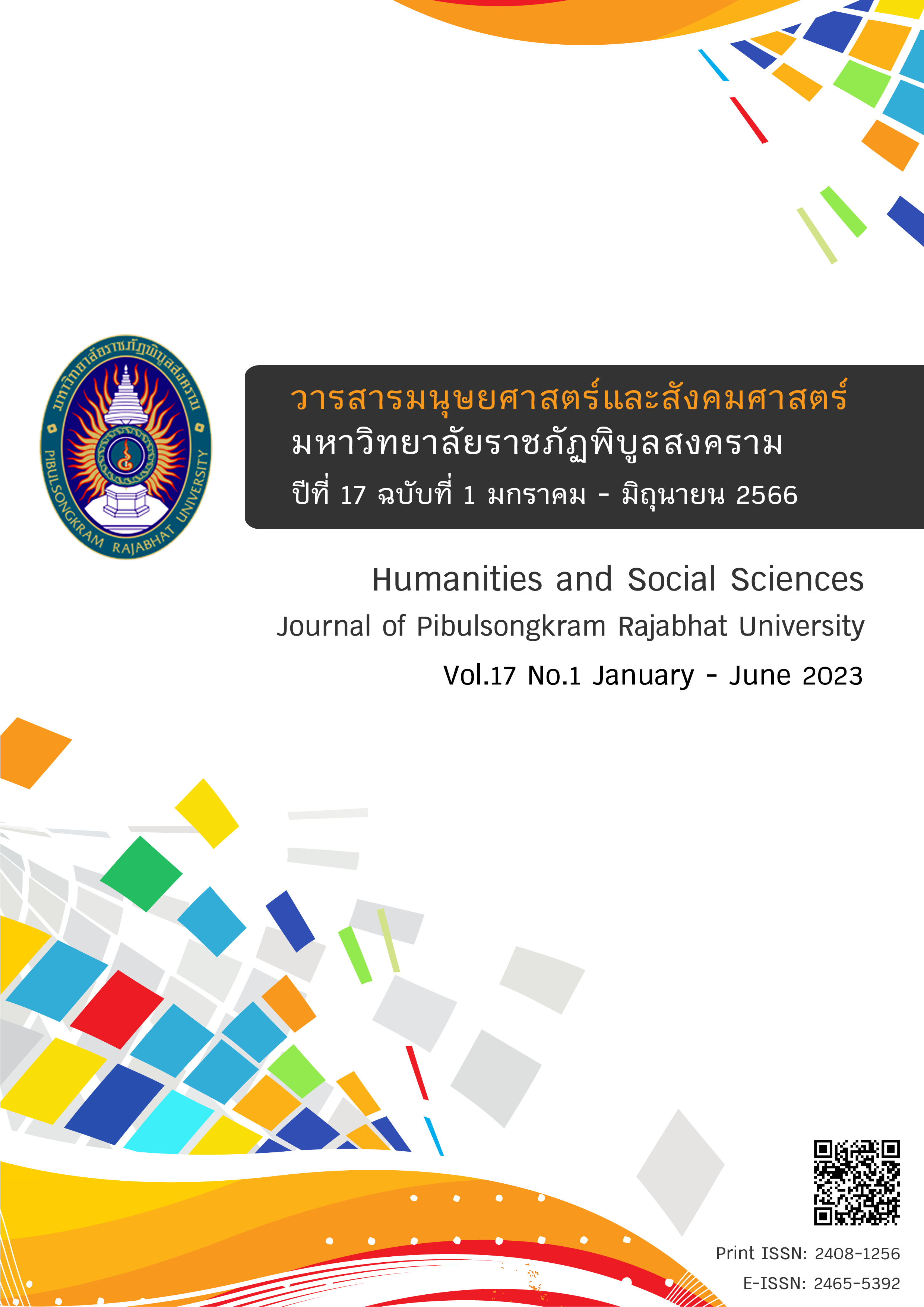Factors Association to safe sex negotiation among female university students in Northern Thailand
DOI:
https://doi.org/10.14456/psruhss.2023.6Keywords:
Association factors, Negotiations for safe sex, Female university studentsAbstract
This cross-sectional study aimed to identify the factors that association to safe sex negotiation among female university students in Northern Thailand. The subjects were 850 female university students in Northern Thailand, which were selected by using systemic random sampling. The questionnaires were developed from the reviewing previous studies and were obtained by online questionnaires through the smart phone. Data were analyzed by using descriptive statistics and finding the relationship between variables with binary logistic regression. The results revealed that female university students had the risk sexual behaviors from inconsistent condom use in the past year. Only 27.2% of subjects reported regularly using a condom during sexual intercourse, and 53.2% had experience drinking alcohol before sexual intercourse. The subjects showed that only 28.5% had safe sex negotiation with partners. The factors that association to safe sex negotiation were drinking alcohol prior to engaging in sexual intercourse (AOR=1.9; 95% CI, 1.2-3.2), not using a condom during their first experience of sexual intercourse (AOR=3.7; 95% CI, 2.0-6.9), age of partners older than 22 years old (AOR = 2.0; 95% CI, 1.1-3.6), intention of using a condom (AOR=1.7; 95% CI, 1.0-2.8), self-efficacy of condom use negotiation for safe sex (AOR=2.3; 95% CI, 1.3-4.0), and feeling uncomfortable to communicate with partners about condom use (AOR=2.4, 95% CI=1.1-5.3). Therefore, the activity design for female youth to have safe sex should be focused on variables that relate to negotiations for safe sex.
References
กฤตยา อาชวนิจกุล. (2554). เพศวิถีที่กำลังเปลี่ยนแปลงไป ในสังคมไทย. วารสารประชากรและสังคม, 15(1), 43-66.
เกศฎาภรณ์ อมรเมธากุล, จิตติมา ขุนบุญ, จิรประภา ตุ่นสิงห์คำ, ฐิติยา เนาวรัตน์, ณัฐวดี เนาวรัตน์, และรัชนก แก้วนิล. (2557). ปัจจัยที่มีความสัมพันธ์กับความตั้งใจและพฤติกรรมการใช้ถุงยางอนามัยของวัยรุ่นหญิงในสถานศึกษา. อุตรดิตถ์: อัดสำเนา.
ชัชวาล เทียนถนอม. (2554). การศึกษารูปแบบความรัก บทบาททางเพศ และพฤติกรรมเสี่ยงทางเพศของนักศึกษาไทย ระดับปริญญาตรี ในเขตกรุงเทพมหานคร. วารสารศิลปะศาสตร์, 11(2), 118-134.
Abraham, C., Sheeran, P., & Henderson, M. (2011). Extending social cognition models of health behaviour. Health Education Research, 26(4), 624-637.
Adefuye, A. S., Abiona, T. C., Balogun, J. A., & Lukobo-Durrell, M. (2009). HIV sexual risk behaviors and perception of risk among college students: implications for planning interventions. BMC Public Health, 9(3), 281-296.
Coleman, L. M., & Ingham, R. (1999). Exploring young people's difficulties in talking about contraception: how can we encourage more discussion between partners?. Health Education Research, 14(6), 741-750.
Daniel, W. W., & Cross, C. L. (2013). Biostatistics: A Foundation of Analysis in the Health Science. (10th ed). New Jersey: Wiley.
Dessalegen, M., & Wagnew, M. (2012). Predictors of consistent condom use among university students: Hierarchical Analysis Debre Berhan, Ethiopia. Global Journal of Medicine & Public Health, 1(4), 23-28.
Jenkins, R. A., Manopaiboon, C., Samuel, A. P., Jeeyapant, S., Carey, J. W., Kilmarx., P. H, et al. (2002).Condom use among vocational school students in Chiang Rai, Thailand. AIDS Education Prevention, 14(3), 228-245.
Kaestle, C. E., Morisky, D. E., & Wiley, D. J. (2002). Sexual intercourse and the age difference between adolescent females and their romantic partners. Perspectives on Sexual and Reproductive Health, 34(6), 304-309.
Kapadia, F., Latka, M. H., Wu, Y., Strathdee, S. A., Mackesy-Amiti, M. E, Hudson, S. M, et al. (2011). Longitudinal determinants of consistent condom use by partner type among young injection drug users: the role of personal and partner characteristics. AIDS Behavior, 15(7), 1309-1318.
Kelly, C. N., Tatiana, M., Danielle, E., Cinnamon, L. D, William, H. G., & Jeanette, N. (2014). Alcohol intoxication and condom use self-efficacy effects on women's condom use intentions. Addictive Behaviors, 39(1), 153-158.
Noar, S. M., Carlyle, K., & Cole, C. (2006). Why communication is crucial: meta- analysis of the relationship between safer sexual communication and condom use. Journal of Health Communication, 11(4), 365-390.
Pearson, J. (2006). Personal Control, Self-Efficacy in Sexual Negotiation, and contraceptive risk among adolescents: The Role of Gender. Sex Roles, 54(4), 615-625.
Pinyaphong, J., Srithanaviboonchai, K., Chariyalertsak, S., Phornphibul, P., Tangmunkongvorakul, A., & Musumari, P. M. (2018). Inconsistent condom use among male university students in Northern Thailand. Asia Pacific Journal of Public Health, 30(2), 147-157.
Ridge, D., Ziebland, S., Anderson, J., Williams, I., & Elford, J. (2007). Positive prevention: contemporary issues facing HIV positive people negotiating sex in the UK. Social Science & Medicine, 65(4), 755-770.
Roye, C. F. (1998). Condom use by Hispanic and African-American adolescent girls who use hormonal contraception. Journal Adolescent Health, 23(4), 205-211.
Shafi, T., Stovel. K., Davis, R., & Holmes, K. (2004). Is condom use habit forming? condom use at sexual debut and subsequent condom use. Sexually Transmitted Disease, 31(6), 366-372.
Soler, H., Quadagno, D., Sly, D. F., Riehman, K. S., Eberstein, I. W., & Harrison, D. F. (2000). Relationship dynamics, ethnicity and condom use among low-income women. Fam Planning Perspective, 32(2), 82-88.
Downloads
Published
How to Cite
Issue
Section
License
Copyright (c) 2021 Humanities and Social Sciences Journal of Pibulsongkram Rajabhat University

This work is licensed under a Creative Commons Attribution-NonCommercial-NoDerivatives 4.0 International License.
Any articles or comments appearing in the Journal of Humanities and Social Sciences, Rajabhat Phibulsongkram University, are the intellectual property of the authors, and do not necessarily reflect the views of the editorial board. Published articles are copyrighted by the Journal of Humanities and Social Sciences, Rajabhat Phibulsongkram University.









